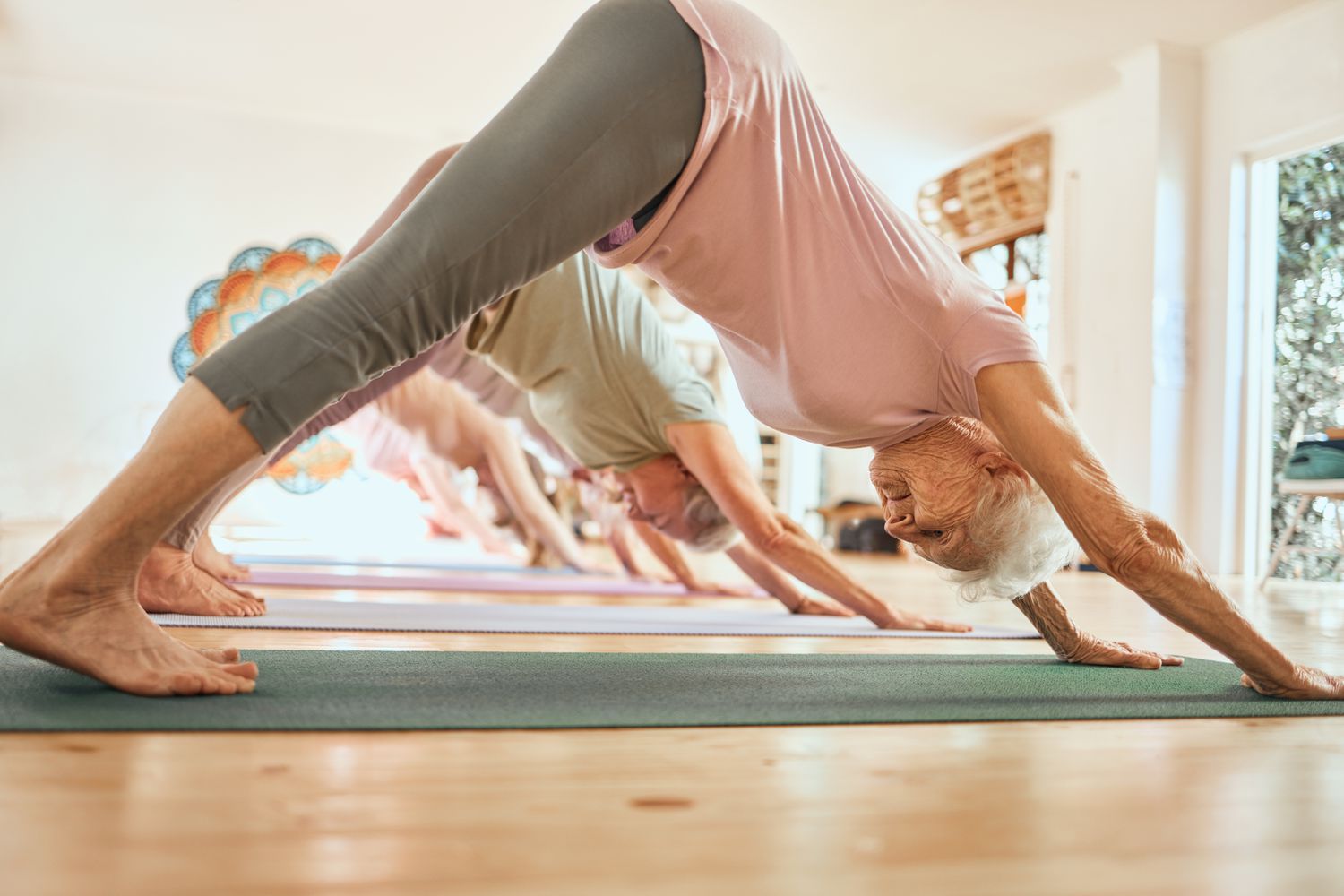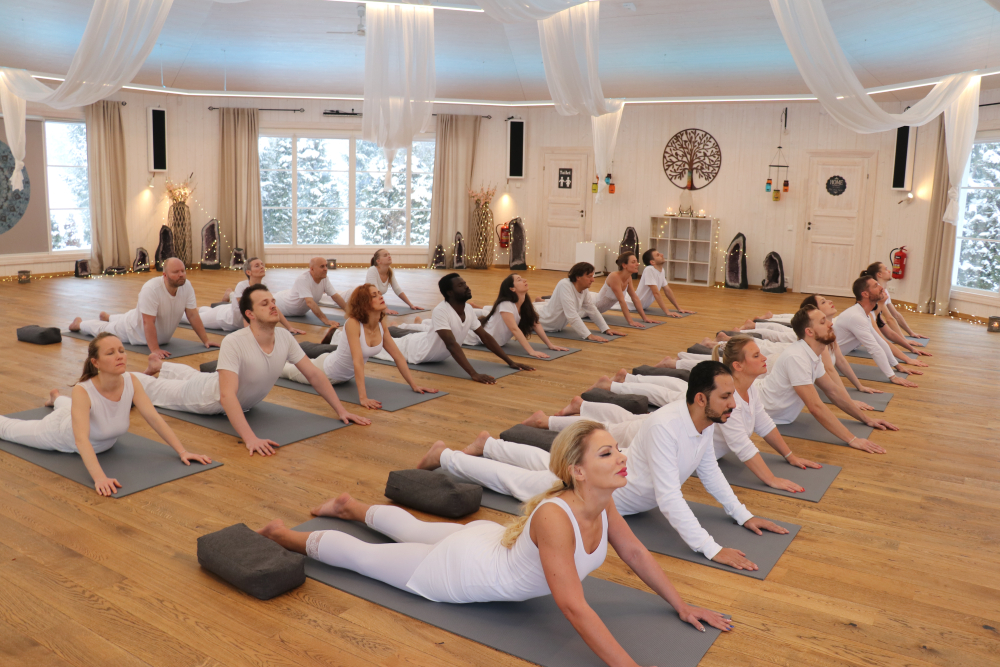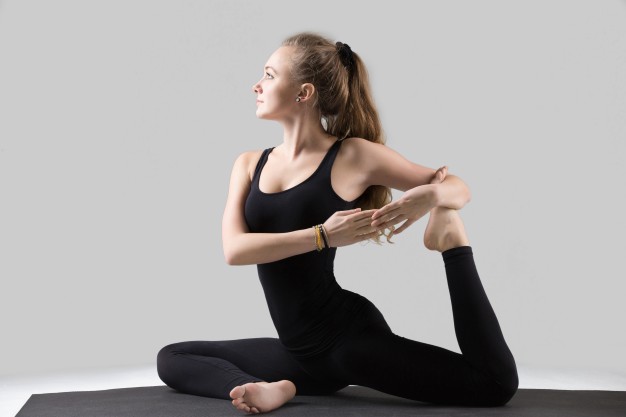Picture this: It’s a crisp Saturday morning, and I’m rolling out my mat in the living room, sunlight filtering through the blinds. I’ve got my favorite playlist humming softly—think gentle acoustic guitar with a hint of ocean waves. But as I ease into child’s pose, that nagging voice creeps in: “Am I doing this enough? Or too much?” Sound familiar? If you’re dipping your toes into yoga or wondering if your current routine is hitting the sweet spot, you’re not alone. I’ve been there, fumbling through sun salutations and questioning every twist and turn. Over the years, tweaking my practice has taught me one thing: the right frequency isn’t a one-size-fits-all rule. It’s about tuning into your body, your goals, and that little spark of joy that keeps you coming back. Let’s dive in and figure out how often you should roll out that mat.
Why Frequency Matters in Your Yoga Journey
Frequency in yoga isn’t just about checking boxes on a calendar—it’s the heartbeat of your practice, dictating how your body adapts and your mind unwinds. Get it right, and you’ll notice subtle shifts: looser hamstrings after a hike, a calmer response to that Monday email avalanche. Mess it up, though, and you might end up sore or burned out, staring at your mat like it’s a nemesis. Think of it as watering a plant—not a daily drench, but steady sips that let roots deepen over time.
From what I’ve seen in my own ups and downs, and chatting with yogis from studios to online forums, consistency trumps intensity every time. Research backs this too: studies show that even weekly sessions can boost balance and flexibility, but ramping up to three or more unlocks deeper benefits like stress reduction and core strength. It’s like compound interest for your wellness—small deposits add up.
But here’s the fun part: your “how often” evolves. Early on, I aimed for three sessions a week and felt like a warrior. Now, with a busier life, two restorative flows keep me grounded. The key? Listen to the whispers from your body before they turn into shouts.
Starting Out: Ideal Frequency for Beginners
If you’re new to yoga, the last thing you want is to dive in headfirst and emerge feeling like you wrestled a pretzel. Experts suggest easing in with two to three sessions a week, giving your muscles time to whisper “thank you” instead of yelling “uncle.” This gentle ramp-up builds familiarity with poses and breathwork without overwhelming your schedule or joints.
I remember my first week: I tried daily 20-minute YouTube flows and woke up creakier than an old floorboard. Scaling back to Tuesdays, Thursdays, and a lazy Sunday changed everything—sudden progress without the drama. Start short, maybe 15-30 minutes, focusing on basics like downward dog and cat-cow to build that foundational confidence.
And don’t sweat perfection. As one Peloton instructor puts it, “Even shorter classes count if they’re consistent.” Your body will thank you with fewer “oops” moments and more “aha” breakthroughs.
Tips for Your Beginner Routine
- Pick accessible styles: Go for Hatha or gentle Vinyasa—nothing too acrobatic. Apps like Down Dog or free YouTube channels from Yoga with Adriene are gold for guided starts.
- Track your vibe: Journal post-session: energized or exhausted? Adjust accordingly.
- Gear up simply: A non-slip mat and comfy clothes are all you need. No fancy blocks yet—use a pillow if a prop calls.
Building Momentum: How Often for Intermediate Yogis
Once you’ve nailed the basics and can flow through a sequence without peeking at your phone, it’s time to level up. Aim for three to five days a week, mixing intensities to keep things fresh—think a power hour on Monday, a chill Yin on Wednesday. This sweet spot lets your body recover while pushing boundaries, turning good habits into great ones.
In my intermediate phase, about six months in, I hit four sessions weekly and watched my flexibility bloom. Tree pose went from wobbly sapling to sturdy oak, and that mental clarity? It was like upgrading from dial-up to fiber optic. But I learned the hard way: skipping rest days led to a tweaked shoulder, a humbling reminder that progress loves patience.
The payoff is real—regular practice here sharpens focus and fortitude, making everyday chaos feel more manageable. Just weave in variety to dodge boredom; after all, yoga’s a dance, not a drill.
The Daily Devotee: Is Every Day Too Much?
Daily yoga sounds dreamy, like sipping coffee with the sunrise, but is it sustainable? For many, yes—especially if you alternate vigorous and restorative styles. Studies hint that home practice frequency predicts health gains more than years on the mat, so even 20 minutes daily can supercharge flexibility and mood. But overdo it, and risks like repetitive strain sneak in.
I flirted with daily flows for a month and loved the rhythm, but by week three, my wrists begged for mercy. Now, I cap it at six days, with one full off-day for Netflix and zero guilt. It’s about harmony, not hustle—your practice should lift you, not drain.
Signs You’re Overdoing It
- Persistent soreness that lingers beyond 48 hours.
- Irritability or dreading your mat time.
- Plateaued progress despite effort.
If these pop up, dial back. Your inner yogi will rebound stronger.
Tailoring Frequency to Your Goals
Yoga’s magic lies in its adaptability, so let’s match frequency to what lights you up—be it bendier hamstrings or a quieter mind. No goal is too small; it’s all about stacking wins that stick.
For flexibility chasers, three sessions weekly targeting hips and shoulders work wonders, releasing tension you didn’t know was there. Strength seekers? Two to four days of power flows build that core fire without burnout. And for stress-busters, daily breath-focused practices melt worries like butter on toast.
Here’s where it gets personal: When life threw curveballs last year—a job switch and move—I leaned on four weekly sessions for stability. It wasn’t about poses; it was reclaiming calm amid the storm. Whatever your why, frequency follows.
Flexibility vs. Strength: A Quick Comparison
| Goal | Recommended Frequency | Sample Session Length | Key Benefits | Best Styles |
|---|---|---|---|---|
| Flexibility | 3x/week | 30-45 min | Improved range of motion, reduced injury risk | Yin, Hatha |
| Strength | 2-4x/week | 45-60 min | Muscle tone, better posture | Vinyasa, Power Yoga |
| Stress Relief | Daily (short) | 10-20 min | Lower cortisol, better sleep | Restorative, Meditation |
This table’s your cheat sheet—tweak as needed, because one size never fits all.
Yoga for Weight Loss: Frequency That Fuels the Fire
Dreaming of shedding pounds through mindful movement? Yoga can be a game-changer, especially when paired with smart eating, but frequency is your secret sauce. Target three to five active sessions weekly, clocking at least an hour each, to torch calories and build mindful habits that curb emotional snacking.
I dropped 10 pounds last summer blending Vinyasa flows four times a week with veggie-packed meals—no fad diets, just steady flow. Poses like boat and plank ignited my core, while the breathwork hushed my midnight munchies. It’s not overnight magic, but consistent? Transformative.
Pro tip: Mix in cardio like brisk walks on off-days for that extra burn. And remember, yoga’s real win for weight loss is the headspace—it fosters self-compassion, turning “I should” into “I choose.”
Pros and Cons of Yoga for Weight Loss
Pros:
- Boosts metabolism through dynamic flows.
- Enhances body awareness to dodge overeating.
- Sustainable—no gym intimidation.
Cons:
- Slower results than high-intensity workouts.
- Requires consistency to see scale shifts.
- Not ideal solo; pair with nutrition.
For routines, check out free plans on Healthline’s yoga section or apps like Alo Moves.
Listening to Your Body: The Ultimate Guide
Your body’s the best guru—ignore it, and yoga becomes a chore; honor it, and it’s pure poetry. Tune in with a quick post-practice check: Do you feel open and alive, or achy and “meh”? Adjust frequency accordingly, maybe swapping a flow for a walk if fatigue whispers.
Early in my journey, I pushed through tweaks, thinking “tough it out” was the way. Spoiler: It wasn’t. A week off healed more than any forced session. Now, I scan for signals like shallow breath or tight hips, scaling back with grace. It’s empowering—yoga teaches surrender as much as strength.
Humor alert: If your dog’s eyeing your mat like it’s prime real estate during savasana, that’s your cue for a lighter day. Laughter’s part of the practice too.
People Also Ask: Real Questions from Fellow Yogis
Google’s “People Also Ask” shines a light on what we’re all pondering late at night. Here are some top ones, answered with heart and a dash of hard-won wisdom.
Can I Do Yoga Every Day?
Absolutely, if it feels nourishing! Alternate intensities—think power one day, gentle the next—to sidestep overuse. I thrive on daily 15-minute mornings, but listen: if joints protest, gift yourself a rest. Daily practice can deepen mindfulness, but sustainability trumps streaks.
Is It Bad to Do Yoga Every Day?
Not inherently—variety keeps it golden. Risks like strain crop up without recovery, so mix styles and honor off-days. One study notes moderate daily yoga’s safe for healthy folks, but consult a doc if you’ve got tweaks. My rule? If it energizes, yay; if it drains, nay.
How Many Days a Week Should I Do Yoga?
Three to five hits the Goldilocks zone for most—enough for gains, room for life. Beginners: two to three; pros: up to daily. Tailor to goals; for me, four keeps the spark without spark-out.
How Long Should a Yoga Session Be?
Aim for 20-60 minutes, depending on your vibe. Shorties build habit; longer ones dive deep. Even 10 minutes counts—better than zero, as Calm’s experts affirm. Quality over quantity, always.
Is 20 Minutes of Yoga a Day Enough?
Heck yes—for starters or busy bees. It sparks flexibility and zen without overwhelm. I squeeze in morning minis and feel the ripple all day. Scale up as cravings grow.
Where to Find Your Next Yoga Fix
Craving community or solo vibes? Navigational intent covered: Hit up local studios via Yelp’s yoga search for in-person magic, or stream from home with Peloton’s app (free trials abound). For on-the-go, Down Dog’s customizable flows are a steal at under $10/month.
Don’t sleep on freebies: YouTube’s treasure trove, from Yoga with Kassandra’s themed series to Boho Beautiful’s scenic shoots. Pro tip: Bookmark three favorites to rotate, keeping novelty alive.
Best Tools and Gear for Consistent Practice
Transactional seekers, this one’s for you—gear that elevates without breaking the bank. Start with a Manduka mat ($80-100, grippy as heck) or budget-friendly Gaiam ($20). Blocks and straps? Amazon basics work fine.
For tracking, apps like Insight Timer offer free guided sessions with progress logs. And for that luxe touch, a Lululemon align tank—worth the splurge for buttery comfort. I’ve curated a starter kit below to kickstart your flow.
Essential Yoga Starter Kit
- Mat: Jade Harmony (eco-friendly, $70).
- Strap: Cotton loop ($5 pack).
- App: Glo (30-day free, then $18/month).
- Book: “Light on Yoga” by B.K.S. Iyengar for pose deep-dives.
These picks have carried me through airport lounges to home havens—reliable, not ridiculous.
Wrapping It Up: Your Mat, Your Rhythm
As we wind down, remember: How often you do yoga boils down to what serves you—that quiet voice saying, “This feels right.” From my mat-side musings to the experts’ nods, the consensus sings consistency with compassion. Start small, celebrate strides, and let the practice unfold like a slow-blooming lotus.
Whether it’s two gentle Tuesdays or five fiery flows, the real win is showing up. Grab that mat, hit play, and breathe into whatever frequency calls. You’ve got this—and hey, if it leads to more zen (and fewer coffee spills), even better. What’s your next session looking like? Drop a thought below; I’d love to hear.
(Word count: 1,728)
FAQ: Your Burning Yoga Frequency Questions
How do I know if I’m practicing yoga too often?
Tune into fatigue signals like constant soreness or mental dread. If sessions leave you zapped instead of zen, cut back to three days and add walks. Rest is practice too—your body rebuilds in the quiet.
What’s the best time of day for yoga?
Mornings energize; evenings unwind. I love dawn flows for that fresh-start buzz, but evenings suit my wind-down. Experiment—your circadian rhythm knows best, per Calm’s insights.
Can yoga alone help with weight loss?
It supports, but pair with balanced eats for firepower. Three to five weekly vigorous sessions amp calorie burn and mindfulness, curbing impulses. Results vary, but consistency compounds.
How does yoga frequency affect mental health?
More often means more calm—daily shorts slash stress, per studies. Even twice weekly lifts mood; I swear by it for anxiety dips. Start where you are; the breath bridges body to bliss.
Should I do yoga before or after workouts?
Post-strength for recovery, pre-cardio for warm-up. It enhances flexibility either way. My combo: Lift then flow—feels like oiling the machine.




